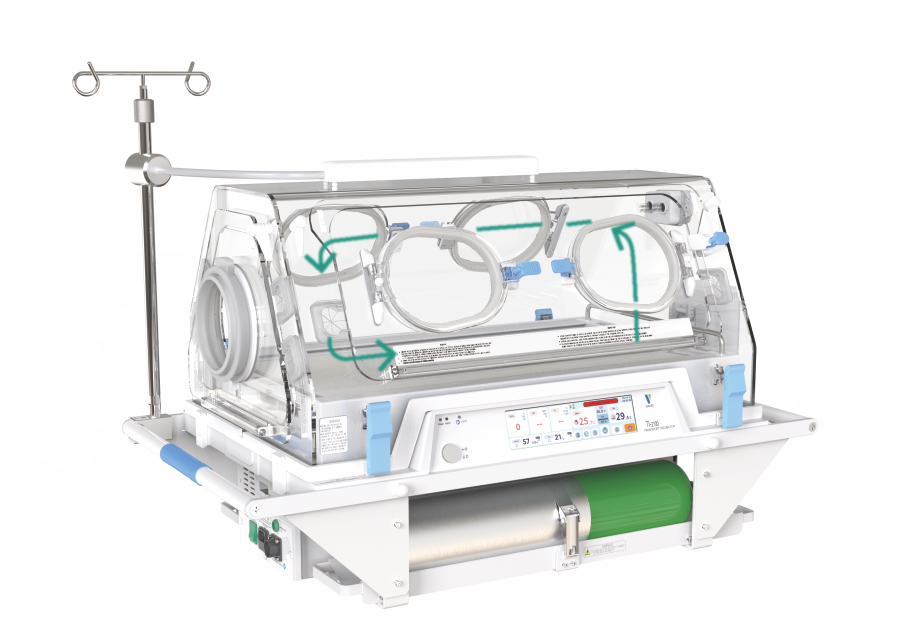

Build a mobile NICU and construct a bridge of life for in-hospital and inter-hospital transport

Precise control
1) Built-in humidity sensor achieves real-time monitoring and feedback of effective data, and accurate control of the humidity in the incubator.
2) The external humidification device generates water mist through ultrasonic high-frequency oscillation.
3) Servo oxygen supply, can be calibrated with single click (21% or 100%), and the oxygen concentration can be quickly increased to the set value.
LCD screen
8.8-inch TFT color LCD touch screen with fast switching between multiple languages, convenient for medical staff's observation and operation.

Updated algorithm
Equipped with an intelligent embedded control system. The updated PID core algorithm makes the temperature fluctuation more uniform.

Double wall hood
Double wall hood can minimize the heat loss generated by in-hospital and inter-hospital transport.


Safe transfer
1) Pressure-relief antidecubitus mattress made of TPU material is antibacterial, waterproof, soft and breathable.
2) Triple independent overheat protection, multi-channel sensor monitoring.
3) A single large-capacity lithium battery can last up to 6 hours, with three power supply modes: storage batteries, alternating current (AC) and direct current (DC).

Human-machine interaction
1) Disposable non-woven straps, light and causing no pressure on the newborns, can firmly fix them and provide safe transport.
2) The top illuminating lamp can provide even light covering the mattress, helping medical staff to observe and care even in a dark environment.
3) The incubator is made of PMMA material, 360° transparent and visible with a side door.

Trolley module
1) Standard normal trolley with three-gear adjustment of height.
2) Optional ambulance type trolley is available for safe and efficient loading and unloading operations.
3) Optional electric-lift type trolley with stepless adjustment of height, with bu ffer pad to reduce the vibration caused to the infants.

Monitoring module
1) Eliminate movement interference and improve the measurement performance under low perfusion and body movement states.
2) Significantly reduce the incidence of severe retinopathy of prematurity (ROP).
3) The sensitivity of screening for critical congenital heart disease (CCHD) can be improved to 93%.
We use cookies to help provide you with the best possible online experience. By continuing to browse our website, you agree that we may store and access cookies on your device. Please read our Cookie Policy for more information.
AGREE

